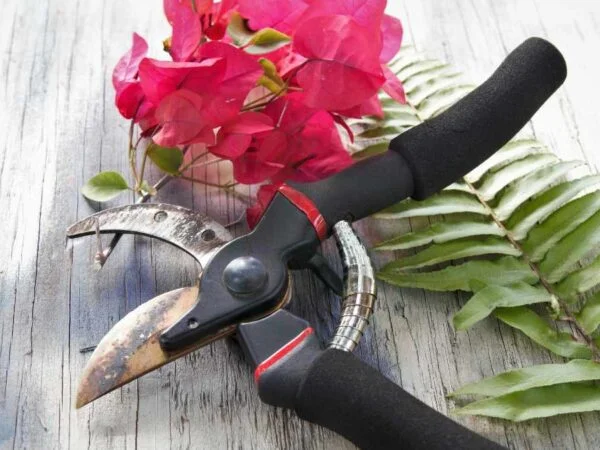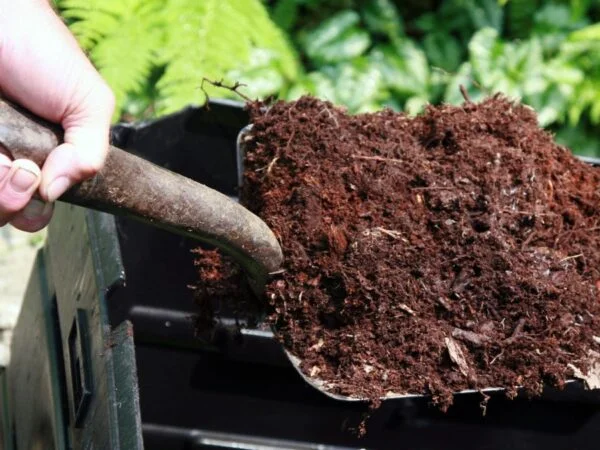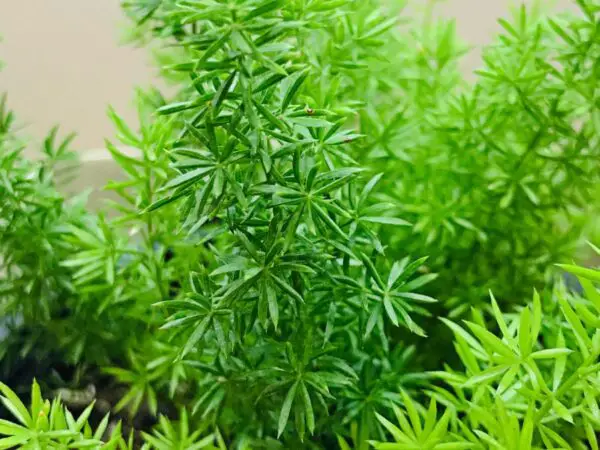Wondering, "How fast do ferns grow?" Understanding the growth rate of ferns can help you cultivate a lush greenery in your garden or indoor space. Let's explore the factors influencing tree ferns and hardy ferns growth, the typical timeline for fern development, new fronds, and the planter.
Fern growth rate varies depending on factors such as species, environmental conditions, and care. Generally, ferns are not rapid growers compared to some other plants. Most fern species take several months to establish themselves and start displaying noticeable growth. For example, the Boston fern (Nephrolepis exaltata) may take around 6-8 months to reach its full size, while some smaller species like the maidenhair fern (Adiantum spp.) may take around 3-6 months. However, once established, ferns can maintain steady growth with proper care, including adequate watering, humidity, and light conditions.
If you're eager to learn more about ferns and their growth patterns, there's plenty more to explore. From understanding the specific needs of different fern species, including tree ferns and rhizome division, to tips for promoting healthy growth in full shade with constant moisture, delving deeper into fern cultivation can be rewarding and enlightening for any plant enthusiast.
Key Takeaways
- Fern Growth Tips: Understand the basics of fern growth, including environmental influences such as full shade and propagation techniques like rhizome division.
- Accelerating Growth: Implement strategies to accelerate fern growth by optimizing growth factors and addressing common growth issues.
- Explore Hardy Varieties: Discover recommended hardy fern varieties that thrive in various conditions.
- Actionable Propagation: Learn practical propagation techniques like division to expand your fern collection effectively.
- Address Growth Challenges: Identify and troubleshoot common growth issues such as full shade, division, and constant moisture to ensure healthy fern development.
- Consult Reliable Sources: Refer to trustworthy references for in-depth information on fern growth and care.
Fern Growth Basics

Growth Rate
Ferns like the Ostrich Fern are aggressive spreaders, quickly covering large areas with their new fronds. In spring, ferns exhibit rapid growth, producing fresh fronds that unfurl elegantly. It typically takes 2-3 years in shade for ferns to reach full maturity.
Life Cycle
Ferns start as tiny spores, germinating into prothalli before fertilization occurs. Once fertilized, they develop into young fern plants called gametophytes, eventually growing into mature ferns with fronds of various shapes and sizes.
Optimal Locations
For optimal growth, ferns thrive in full shade and shady locations with well-draining soil rich in organic matter. They prefer acidic to slightly alkaline soil conditions and benefit from regular mulching to retain moisture and provide nutrients.
Culture Insights
Mulching around ferns helps retain soil moisture, suppresses weeds, and adds organic matter as it decomposes. Fertilizing ferns in spring promotes healthy growth and vibrant fronds. Ferns prefer slightly acidic to neutral pH levels for optimal development.
Environmental Influence
Indoor Care Tips
Taking care of ferns indoors involves providing optimal conditions. Ensure to keep the soil consistently moist but not waterlogged. Place indoor ferns in areas with indirect sunlight.
Understanding the watering needs of indoor ferns is crucial for their growth. Water them when the top inch of soil feels dry to the touch. Avoid overwatering as it can lead to root rot.
When it comes to the light requirements for indoor ferns, they thrive in bright, indirect light. Direct sunlight can scorch their delicate fronds, so place them near windows with sheer curtains.
Outdoor Planting
To plant ferns outdoors, start by selecting a shady spot with well-draining soil. Dig a hole twice the size of the root ball and gently place the fern in it. Water thoroughly after planting.
Propagating ferns through division is a simple process. Dig up the mature plant and carefully separate the roots into smaller sections. Replant these divisions in suitable locations.
Outdoor ferns require specific growth conditions to thrive. They prefer moist, well-draining soil rich in organic matter. Ensure they receive adequate shade and protection from harsh winds.
Climate Adaptation
Ferns have remarkable abilities to adapt to various climates. They can survive in both tropical and temperate regions by adjusting their growth patterns accordingly.
Different fern varieties exhibit varying levels of cold tolerance. Some species can withstand frost and snow, while others are more sensitive to low temperatures.
The suitability of climate for fern growth depends on factors like temperature, humidity, and sunlight exposure. Understanding these requirements is essential for successful cultivation.
Hardy Ferns Guide

Varieties for Oklahoma
Ferns that thrive in Oklahoma's climate include the Autumn Brilliance Fern and the Cinnamon Fern. These varieties are well-suited to the state's humid summers and mild winters. The Lady Fern is another excellent choice due to its adaptability to various soil types.
Specific characteristics of ferns ideal for Oklahoma encompass their ability to withstand both heat and humidity. These ferns typically have robust root systems that aid in moisture retention during hot spells. They often feature fronds that can tolerate sun exposure, a common occurrence in Oklahoma's climate.
The best fern varieties for growth in Oklahoma should exhibit resilience to fluctuating weather conditions. Varieties such as the Maidenhair Fern and the Ostrich Fern are popular choices due to their hardiness and ability to thrive in diverse environments.
Cold Tolerance
Different fern species showcase varying levels of cold tolerance, with some being more resilient than others. Species like the Christmas Fern and the Holly Fern are known for their exceptional ability to endure colder temperatures. These ferns can survive frost and even light snowfall.
Ferns adapt to cold weather conditions by undergoing physiological changes that enable them to conserve energy and protect their delicate structures. Factors influencing ferns' cold tolerance include their genetic makeup, previous exposure to low temperatures, and overall health.
Understanding the nuances of cold tolerance in ferns is crucial for gardeners looking to cultivate these plants in regions prone to chilly weather. By selecting species like the Japanese Painted Fern or the Sensitive Fern, individuals can ensure a successful fern garden even during colder months.
Propagation Techniques
Spore Sowing
Fern spores are tiny reproductive units that germinate into new fern plants. These spores are typically sown on a suitable growing medium, such as moist soil or sphagnum moss. The process of sowing fern spores involves scattering them evenly over the surface of the growing medium and keeping them consistently moist to aid in germination. Once the spores start germinating, they develop into tiny heart-shaped structures known as gametophytes.
The timeline for fern growth from spore sowing can vary depending on the species of fern. Generally, it takes several weeks to months for the gametophytes to mature and produce young fern plants. This method of propagation allows for the cultivation of a wide variety of fern species and is a fascinating way to observe the complete life cycle of these unique plants.
Division Methods
Dividing ferns is a common technique used to propagate these plants and maintain their vigor. This method involves carefully separating an existing fern plant into smaller sections, each containing roots and fronds. By dividing ferns, you can create multiple new plants from a single parent plant, allowing for easy propagation and expansion of your fern collection.
To propagate ferns through division methods, start by selecting a healthy and well-established fern plant. Gently remove the plant from its pot or garden bed and identify natural divisions or sections where you can separate it without causing damage. Carefully divide the plant using clean gardening tools, ensuring that each new section has enough roots and foliage to support its growth. Replant the divided sections in suitable growing conditions, providing adequate moisture and light for optimal development.
Growth Factors
Soil Type
Ferns thrive in well-drained soil with a slightly acidic to neutral pH level. They prefer moist, rich soil that is high in organic matter.
Organic matter in the soil helps retain moisture and provides essential nutrients for healthy fern growth.
Watering Needs
Ferns require consistent moisture but are susceptible to root rot if overwatered. It's crucial to maintain optimal soil moisture by watering when the top inch of soil feels dry.
Overwatering can lead to yellowing fronds, while underwatering may cause browning or wilting leaves - signs of stress in ferns.
Light Requirements
Ferns typically prefer indirect light, making them ideal for shaded areas indoors or under trees outdoors. Providing adequate light is crucial for photosynthesis and overall plant health.
Insufficient light can result in pale, leggy fronds and stunted growth - affecting the fern's ability to thrive and reproduce effectively.
Common Growth Issues
Troubleshooting Tips
Ferns may face common issues such as yellowing fronds, which could indicate overwatering or nutrient deficiencies. To address this, adjust watering and consider a balanced fertilizer for healthier growth.
When dealing with brown tips on fronds, it might be due to low humidity levels. Increase moisture by misting the plant regularly to prevent further drying out.
To maintain healthy ferns, ensure they receive indirect sunlight, consistent watering, and proper drainage to avoid root rot.
Pest Problems
Common pests that can affect ferns include aphids and spider mites. These pests can cause damage by sucking sap from the leaves, leading to wilting and discoloration.
Identify these pests by checking for small insects on the undersides of leaves or webbing between fronds. Use a gentle spray of water or insecticidal soap to control their population.
For natural pest management strategies, introduce beneficial insects like ladybugs or lacewings that feed on harmful pests without harming the ferns.
Accelerating Growth
Fertilization Strategies
Ferns benefit from proper fertilization to support their growth. Applying a balanced fertilizer during the growing season aids in nourishing the plant. One should fertilize ferns sparingly, as excessive nutrients can harm them.
When it comes to fertilizing ferns, it's crucial to understand the specific needs of each type of fern. Different species may require varying amounts of nutrients. Timing is key, and fertilizing during the active growth period ensures that ferns receive essential nourishment.
- Proper fertilization supports fern health
- Apply balanced fertilizer during growing season
- Understand specific nutrient needs of different fern species
Pruning Practices
Pruning plays a significant role in promoting healthy growth for ferns. By removing dead or damaged fronds, you encourage new growth and prevent disease spread. Pruning also helps maintain the plant's shape and aesthetics.
To prune ferns effectively, ensure you use clean, sharp tools to avoid damaging the plant. It's best to prune in early spring before new growth emerges. Removing old fronds allows for better air circulation and light exposure, enhancing overall plant health.
- Pruning promotes healthy growth
- Use clean, sharp tools for pruning
- Prune in early spring before new growth emerges
Recommended Varieties
Indoor Favorites
Indoor ferns are popular for their lush foliage and ability to thrive in low light conditions. Some favored varieties include the Boston Fern, known for its graceful fronds, and the Maidenhair Fern with delicate, lace-like leaves. These ferns add a touch of greenery to indoor spaces and require regular watering to maintain their moisture levels.
When caring for indoor ferns, it's essential to provide them with consistent humidity levels by misting their leaves or placing a humidifier nearby. Ensure they are placed in well-draining soil to prevent root rot. Indoor ferns benefit from occasional fertilization during the growing season to support their healthy growth.
The aesthetic appeal of indoor ferns lies in their ability to soften harsh indoor environments with their graceful, arching fronds. Their vibrant green foliage adds a refreshing touch of nature to living rooms, bedrooms, or offices, creating a calming and inviting atmosphere.
Outdoor Hardy Types
Outdoor fern varieties are prized for their resilience and adaptability to various climates. Hardy types like the Ostrich Fern and Cinnamon Fern can withstand harsh weather conditions and thrive in shaded outdoor areas. These ferns boast sturdy fronds that can endure wind and rain without losing their structural integrity.
Hardy fern types typically exhibit characteristics such as vigorous growth habits and robust root systems that anchor them firmly in garden beds or borders. They require minimal maintenance once established and can spread gradually to form lush green patches in outdoor landscapes.
The durability of outdoor fern varieties makes them ideal choices for landscaping projects that aim to create naturalistic settings with a focus on native plants. Their ability to flourish in different soil types and light conditions allows gardeners to incorporate them seamlessly into existing outdoor designs.
Reliable References
Books and Guides
When it comes to fern cultivation, explore recommended books such as "The Complete Book of Ferns" by Mobee Weinstein. Understand the value of guides like "Fern Grower's Manual." These resources offer insightful tips on nurturing healthy ferns.
Delve into the world of ferns with these informative reads, expanding your knowledge on different species and care techniques. Useful for both beginners and experienced gardeners.
Online Resources
For fern enthusiasts, online platforms like the American Fern Society website provide a wealth of information. Benefit from forums, articles, and expert advice on fern care. Websites like Gardening Know How offer detailed guides on fern propagation and maintenance.
Explore online databases to identify various fern species, understand their growth requirements, and troubleshoot common issues. Engage with fellow enthusiasts to share experiences and learn new techniques.
Final Remarks
In understanding how fast ferns grow, you've delved into the essential factors affecting their growth, from environmental conditions to propagation techniques. By exploring reliable references and recommended varieties, you've equipped yourself with valuable insights to nurture healthy ferns in your garden. Remember, maintaining optimal conditions, such as proper watering and light exposure, can significantly impact the growth rate of your ferns.
As you embark on your fern-growing journey, apply the knowledge gained here to accelerate growth and troubleshoot common issues effectively. Experiment with different varieties and propagation methods to find what works best for your unique gardening environment. Keep learning and exploring the fascinating world of ferns to cultivate a thriving green oasis in your outdoor space.
Frequently Asked Questions
How fast do ferns grow?
Fern growth rates vary, but on average, they can grow 1-6 inches per year. Factors like species, environment, and care influence growth speed.
What are the key factors influencing fern growth?
Key factors include light levels, water availability, temperature, soil quality, and humidity. Maintaining these conditions optimally can promote healthy fern growth.
Can I accelerate fern growth?
Yes, you can accelerate fern growth by providing adequate light, water, nutrients, and suitable growing conditions. Regular fertilization and proper care practices can also boost growth rates.
Which fern varieties are known for fast growth?
e fern varieties known for relatively fast growth include Boston Fern (Nephrolepis exaltata), Maidenhair Fern (Adiantum spp.), and Rabbit's Foot Fern (Davallia fejeensis).
How can I propagate ferns to increase their growth?
Ferns can be propagated through spores or division. Spore propagation involves sowing spores on a suitable medium while division includes separating plant clumps to create new plants. Both methods can help increase fern population and growth.
Image Source: Paid image from CANVA





